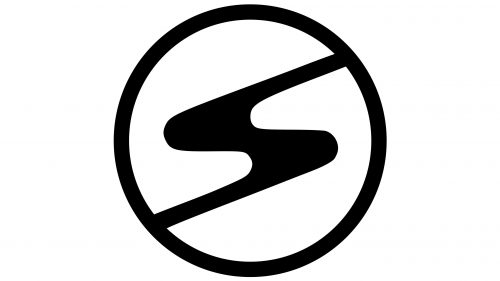The Sachsenring logo is associated with technological progress, as the company is committed to innovation in all its endeavors, from car manufacturing to selling parts. The emblem’s design reflects the idea of continuous development and symbolizes a passion for fast movement.
Sachsenring: Brand overview
Sachsenring’s history began in 1957 in Zwickau, East Germany (GDR). The company was established on the foundation of the former Auto Union factories, which were located in the Soviet occupation zone after World War II. The new company was named VEB Sachsenring Automobilwerke Zwickau, reflecting its Saxon heritage and connection to the automotive industry.
The main goal was to build a people’s car for the GDR. The first Trabant prototype, the Trabant P50, was unveiled in 1957 and became iconic. It was a cheap, small car designed to provide mobility to East Germans.
Production of the Trabant began in 1958. The car featured a 500 cc two-stroke engine and a Duroplast body made of cotton fibers and phenolic resins. This material choice was due to a steel shortage in the GDR and the need to create a lightweight, affordable car.
Improvements to the Trabant continued in the 1960s. The Trabant 600 model debuted in 1962 with a more powerful 600 cc engine and upgraded braking and suspension systems.
The most popular and well-known model, the Trabant 601, was introduced in 1964. This model was produced almost unchanged until 1990 and became a symbol of the GDR’s automotive industry.
Challenges grew in the 1970s. Despite the Trabant’s popularity, the technology used in its production became outdated. The GDR’s centralized planning and economic constraints hampered modernizing the car.
The 1980s were a period of stagnation. Attempts to develop new models, including prototypes with four-stroke engines, failed due to a lack of funds to update production. The Trabant continued to be produced in its original form, falling behind modern Western cars.
The fall of the Berlin Wall in 1989 and the subsequent reunification of Germany in 1990 were pivotal moments. Suddenly, the Trabant couldn’t compete in a market flooded with modern Western vehicles.
In 1990, production of the Trabant 1.1 with a four-stroke engine from the Volkswagen Polo began in an attempt to adapt to the new circumstances. However, this model couldn’t save the company’s financial situation, and in April 1991, production of the Trabant ceased.
After Trabant production ended, the company sought a new role in reunified Germany. Privatized and renamed Sachsenring Automobiltechnik GmbH, the new company focused on providing engineering services and manufacturing automotive components.
Throughout the 1990s and 2000s, Sachsenring remained active as a supplier to the automotive industry. The company produced various parts, including body sections and interior components, for numerous German and international automakers.
However, financial problems persisted. The company filed for bankruptcy in 2002 but continued to operate after reorganization.
In the following years, Sachsenring maintained its presence in the automotive industry as a supplier of parts and services rather than as an independent automaker. The company’s legacy lives on through its contributions to the automotive sector and its place in East Germany’s industrial history.
Meaning and History
What is Sachsenring?
It is an East German automobile company based in Zwickau, Saxony, known primarily for producing the Trabant. This small and affordable car became an icon of the former German Democratic Republic (GDR). The company’s cars were designed to be simple, practical, and affordable for the average East German, emphasizing durability and low running costs. Despite its modest performance and outdated technology compared to Western cars, the Trabant remained a popular choice in the GDR due to limited alternatives and long waiting lists to buy cars.
1957 – today
Since the company Sachsenring was named after the famous racing track, its logo resembles a winding road stretching into the distance. This symbolizes constant movement, development, prospects, and the pursuit of new heights. The dynamic emblem also highlights the brand’s connection to the automotive industry.
The designers chose not to replicate every detail accurately, instead depicting the track schematically and even exaggerating the width of the curves to form an “S.” This simple geometric style demonstrates the company’s desire to be accessible and understandable, building trust with clients. The winding road element is placed within a perfectly round ring, which has several meanings:
- A car wheel
- A circular part of a track
- A symbol of balance and equilibrium
Many car manufacturers use circular logos, and Sachsenring followed this trend to align with other, more well-known brands and share in their prestige.
Interestingly, the emblem contains no angles except for those in the negative space created on either side of the stylized road. The soft, curving lines evoke a sense of safety, which is paramount in the automotive industry, even if the company produces body parts rather than complete vehicles.





